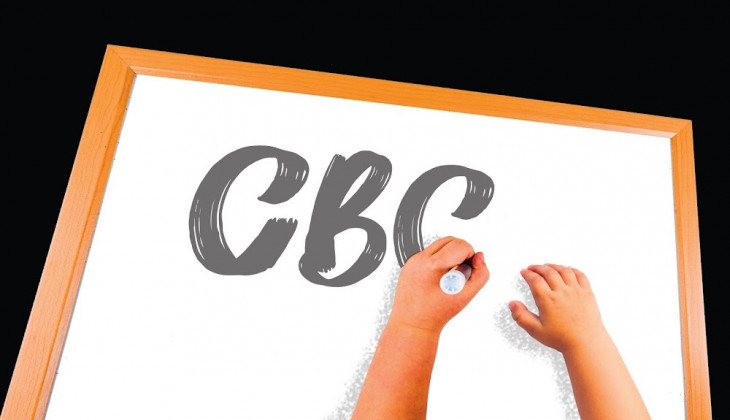How CBE is preparing learners to face life

Kenya’s Competency-Based Education (CBE) marks a bold departure from the traditional approach to schooling, ushering in a transformative shift in how education is delivered and experienced.
Unlike the old system that prioritised content mastery, rigid curricula, and high-stakes examinations, CBE introduces a more holistic and learner-centred framework designed to equip students with practical skills, values, and attitudes necessary for personal and national development.
The previous system focused heavily on teaching and rote memorisation, measuring success through summative assessments that often fostered unhealthy competition.
In contrast, CBE puts the learner at the centre of the process—emphasising understanding, creativity, critical thinking, and problem-solving.
Assessment is no longer purely about final exams; it now balances formative and summative approaches to ensure continuous feedback and improvement.
Furthermore, while the old curriculum offered limited flexibility and specialisation, CBE opens doors for learners to explore personalised academic and career pathways.
This shift from a one-size-fits-all model to one that nurtures individual talents and aspirations reflects a deeper understanding of education—not just as a means to pass exams, but as a lifelong journey of growth and contribution to society.
In essence, the paradigm has moved from schooling to education, from teaching to learning, and from conformity to competency. Kenya’s CBE reform is not just an upgrade; it is a re-imagination of what education can and should be in the 21st century.
In Part 2 of this series, the selection of learners and categorisation of schools were unpacked. In Part 3, I continue to expound on placement, assessment and grading.
Placing dreams with purpose
As Kenya’s CBE system moves boldly into the senior school phase, one of its most progressive features is the learner-centred placement process.
Designed to match students with schools that best suit their interests, strengths, and potential, the placement strategy is rooted in fairness, transparency, and long-term national development goals.
At the heart of this placement model are the learners’ choices and aspirations.
For the first time, learners will be given a genuine voice in selecting the senior school pathway that aligns with their personal dreams and career ambitions—be it in STEM, Social Sciences, or Arts and Sports Sciences.
This respects each learner’s individuality and helps entrench a deeper commitment to their learning journey.
Complementing this is the criterion of merit, based on Grade 9 assessment results.
These assessments will capture a learner’s academic performance over time, moving beyond one-off exams to offer a more comprehensive view of progress and potential.
Merit will help ensure that learners are placed where they are most likely to succeed and grow. Another transformative aspect of the placement process is the use of psychometric tests.
These will assess each learner’s aptitude, talent, and interests, providing data that supports informed decision-making.
By combining objective measures with learner aspirations, the CBE system ensures a holistic approach to matching students with appropriate pathways.
The principle of equity, particularly regional balancing, will also guide placement. This ensures that learners from all parts of the country—urban and rural, well-resourced and underserved—are fairly represented in senior schools across the nation.
It is a step towards bridging historical gaps in education access and promoting national cohesion.
Also, the process will consider school capacity, including the availability of physical space, learning materials, and trained teachers. While learners’ choices are prioritised, placement must be done within the realities of what each school can accommodate.
This helps maintain quality learning environments while guiding investment in expanding infrastructure where needed.
In all, the placement of learners into senior schools under the CBE system is a carefully structured process that balances individual aspirations with national needs.
CBE marks a significant shift from the rigid selection systems of the past to a dynamic and inclusive approach that prepares learners not just for exams, but for life.
Through this model, Kenya is laying the groundwork for an education system where every learner finds their place—and their purpose.
Learner assessment and grading
Kenya’s transition to CBE is redefining not only how learners are taught but also how they are assessed and graded.
Gone are the days when a single high-stakes exam determined a child’s academic fate. Instead, the new system embraces a more balanced, continuous, and learner-centred assessment model that reflects the holistic development of knowledge, skills, and values.
At the centre of this new approach is the Kenya Primary School Education Assessment (KPSEA), which accounts for 20 per cent of the final score for learners transitioning to senior school.
KPSEA, undertaken at the end of Grade 6, provides a snapshot of a learner’s foundational competencies in key subjects, while also helping identify strengths, learning gaps, and areas for support.
Importantly, KPSEA is not a do-or-die exam; rather, it is part of a broader, continuous assessment process. The bulk of learner assessment occurs at the junior secondary level, specifically in Grades 7 and 8, through School-Based Assessments (SBA).
These assessments are designed to capture classroom-level learning and practical application of skills across all learning areas. SBA activities include projects, oral presentations, experiments, peer assessments, and reflective journals.
This format not only encourages creativity and critical thinking but also gives teachers a clear and ongoing understanding of each learner’s progress.
SBAs play a key role in promoting active participation, collaboration, and personalised feedback.
The final stage of junior secondary assessment is the Kenya Junior School Education Assessment (KJSEA), undertaken at the end of Grade 9.
This contributes 60 per cent of the final grade and serves as the main summative evaluation used for placement into senior school pathways.
KJSEA evaluates the learner’s mastery of core competencies, problem-solving skills, and readiness for specialised learning. However, even here, the focus is not merely on rote knowledge but on how well learners can apply what they know in real-world contexts.
This blend of 20 per cent KPSEA, ongoing SBA, and 60 per cent KJSEA represents a significant shift towards comprehensive, fair, and development-oriented assessment.
It values the learning process as much as the outcomes and ensures that no single test defines a learner’s future. In essence, the CBE assessment model in Kenya is about recognising that learning is a journey—not a one-time event.
By capturing academic ability, practical application, and personal growth, the system is preparing learners not just for exams, but for life. Through continuous assessment and inclusive grading, every learner is given the opportunity to shine, grow, and reach their full potential.
With equity, inclusivity, and excellence as its guiding principles, CBE is laying the foundation for a future where every learner has the chance to discover their purpose, unlock their potential, and contribute meaningfully to national and global development.
As the journey continues, all stakeholders—parents, teachers, policymakers, and communities—must rally behind this transformative vision.
The success of CBE lies not just in policy but in collective commitment to reimagining education as a tool for individual empowerment and societal progress.
The Author is a Professor of Chemistry at the University of Eldoret, a former Vice-Chancellor, and a Quality Assurance Expert












